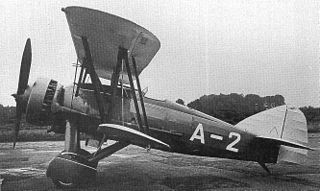
The Avro 679 Manchester was a British twin-engine heavy bomber developed and manufactured by the Avro aircraft company in the United Kingdom. While not being built in great numbers, it was the forerunner of the more famed and more successful four-engined Avro Lancaster, which was one of the most capable strategic bombers of the Second World War.

The Armstrong Whitworth A.W.38 Whitley was a British medium bomber aircraft of the 1930s. It was one of three twin-engined, front line medium bomber types that were in service with the Royal Air Force (RAF) at the outbreak of the Second World War. Alongside the Vickers Wellington and the Handley Page Hampden, the Whitley was developed during the mid-1930s according to Air Ministry Specification B.3/34, which it was subsequently selected to meet. In 1937, the Whitley formally entered into RAF squadron service; it was the first of the three medium bombers to be introduced.

The Bristol Bombay was a British troop transport aircraft adaptable for use as a medium bomber flown by the Royal Air Force (RAF) during the Second World War.

The Armstrong Whitworth A.W.41 Albemarle was a twin-engine transport aircraft developed by the British aircraft manufacturer Armstrong Whitworth and primarily produced by A.W. Hawksley Ltd, a subsidiary of the Gloster Aircraft Company. It was one of many aircraft which entered service with the Royal Air Force (RAF) during the Second World War.
Sir W. G. Armstrong Whitworth Aircraft Company, or Armstrong Whitworth Aircraft, was a British aircraft manufacturer.

The Handley Page Heyford was a twin-engine biplane bomber designed and produced by the British aircraft manufacturer Handley Page. It holds the distinction of being the last biplane heavy bomber to be operated by the Royal Air Force (RAF).

The Handley Page Hinaidi was one of two twin-engine bombers built by Handley Page that served with the Royal Air Force between 1925 and 1935. The aircraft was developed from the Handley Page Hyderabad and named after Hinaidi, an RAF station in Iraq.

The Armstrong Whitworth A.W.27 Ensign was a British four-engine monoplane airliner and the largest airliner built in Britain during the Interwar period.

The Fairey Hendon was a British monoplane, heavy bomber of the Royal Air Force, designed by Fairey Aviation in the late 1920s. The aircraft served in small numbers with one squadron of the RAF between 1936 and 1939. It was the first all-metal construction low-wing monoplane to enter service with the RAF.

The Handley Page H.P.54 Harrow was a heavy bomber designed and produced by the British aircraft manufacturer Handley Page. It was operated by the Royal Air Force (RAF) and used during the Second World War, although not as a bomber.

The Armstrong Whitworth A.W.35 Scimitar was a British single-engine biplane fighter aircraft designed and built by Armstrong Whitworth Aircraft. Four Scimitars were produced for the Norwegian Army Air Service and were delivered in 1936.

The Armstrong Whitworth A.W.16 was a British single-engine biplane fighter aircraft designed and built by Armstrong Whitworth Aircraft. A number were sold to the Chinese Kwangsi Air Force.

The Armstrong Whitworth A.W.14 Starling was a prototype British single-seat biplane fighter developed for the Royal Air Force in the late 1920s which unsuccessfully competed against the Bristol Bulldog.

The Blackburn B-3 was a prototype British torpedo bomber designed and built by Blackburn Aircraft as a potential replacement for the Ripon. It was unsuccessful, with only the two prototypes being built.

The Armstrong Whitworth AW.55 Apollo was a 1940s British four-engine turboprop airliner built by Armstrong Whitworth at Baginton. The aircraft was in competition with the Vickers Viscount but was beset with engine problems and only two were built.

The Armstrong Whitworth A.W.19 was a two/three-seat single-engine biplane, built as a general-purpose military aircraft in the mid-1930s. A newer, monoplane aircraft was preferred and only one A.W.19 was built.
The Armstrong Whitworth A.W.29 was a British bomber aircraft built by Armstrong Whitworth Aircraft.

The de Havilland DH.56 Hyena was a prototype British army cooperation aircraft of the 1920s. A single-engined biplane, the Hyena was designed against an RAF requirement, but was unsuccessful with only two being built, the Armstrong Whitworth Atlas being preferred.

The Vickers Type 253 was a single-engined two-seat biplane general-purpose military machine built to a 1930 government specification. It won a production contract, but this was transferred to the same company's monoplane equivalent, the Wellesley. Only one Type 253 was built.
The Handley Page H.P.51 was a monoplane conversion of the earlier, unsuccessful biplane bomber-transport aircraft, the Handley Page H.P.43. The Air Ministry ordered the production variant off the drawing board as the Handley Page H.P.54 Harrow bomber.

















